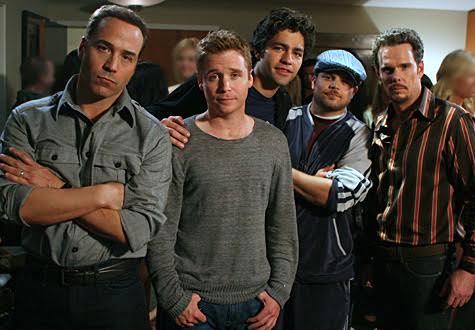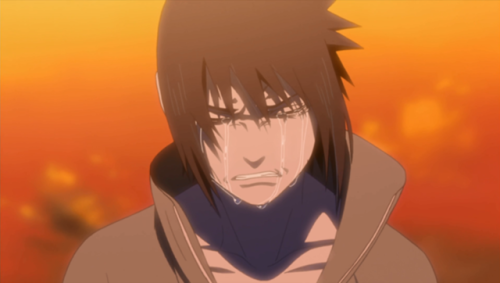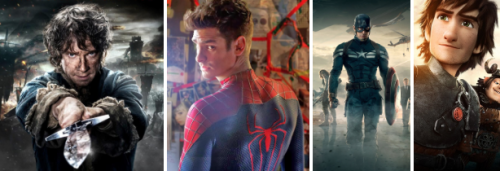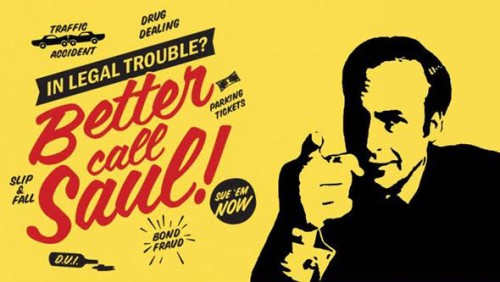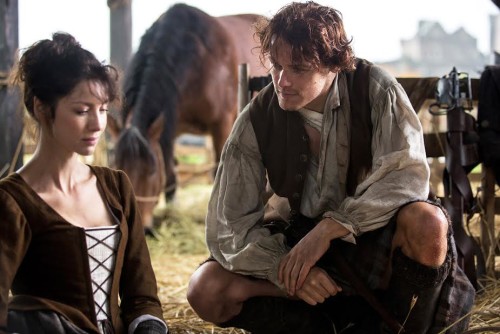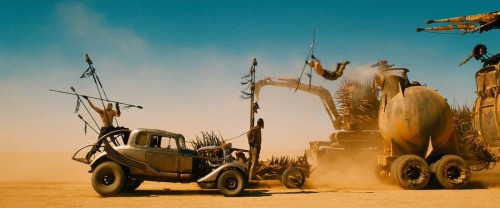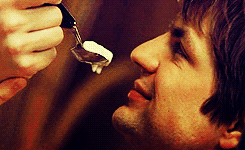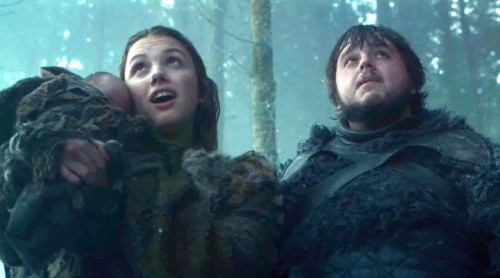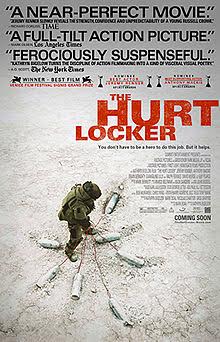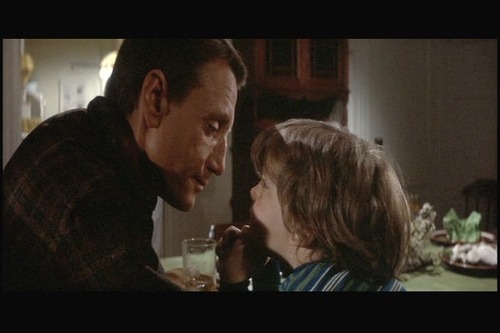This guest post by Rachel Wortherley appears as part of our theme week on Masculinity.
“Ultimately, the show’s theme is friendship and family. The characters may have bling, but they’re grounded guys who look out for each other. That’s the backbone of the show. If it was just about fantasy lifestyles, it wouldn’t be relatable” – Doug Ellin, creator and director, Entourage.
The HBO series Entourage (2004-2011) focuses on four men, born and bred in Queens, as they navigate the tough terrain of Hollywood. The show revolves around actor and superstar Vincent Chase. Rounding out his entourage are: Vince’s best friend and manager, Eric “E” Murphy (Kevin Connolly); childhood friend, assistant, and driver Sal “Turtle” Assante (Jerry Ferrara); and Vince’s older half-brother, personal chef, and C-list actor, Johnny “Drama” Chase (Kevin Dillon). The story and characters are inspired by actor Mark Wahlberg, his manager Stephen Levinson, and various members of Wahlberg’s entourage during Wahlberg’s rise to fame. Entourage has often been criticized for its portrayal of male fantasy lifestyles. Their lives consist of buying expensive cars, attending exclusive parties and movie premieres, and hot girls. Ellin’s estimation is correct. Entourage is not a portrayal of the male fantasy. Instead, it reinforces the harsh reality that being a male, especially in Hollywood, equals power.
Each episode appears to end with a satisfying resolution. Seasons one and two consist of the guys finding Vince a new role that will propel him to stardom. In season one, Vince is coming off of a mediocre debut film and now wants a role with substance, while his equal opportunity offender and hardball agent, Ari Gold (Jeremy Piven), wants Vince to take a blockbuster film. At the end of season one, Vince films the indie and season two depicts Eric and Ari through the trials, tribulations, schmoozing, and negotiations of making Vince well-known to director James Cameron.
In season two, episode seven, “The Sundance Kids,” the guys end up fracturing a movie deal with producer Harvey Weingard (Maury Chakin) in the hopes of James Cameron casting Vince as Aquaman. At the end of the episode, when James Cameron leaves the film early, their hopes are dashed. That is, until Vince receives a phone call from James Cameron asking him if he wants to be his Aquaman. It is made clear that at this point, Vince is largely unknown. He fails to reach the superstardom of Tom Cruise, Leonardo DiCaprio, or Will Smith, yet Cameron is willing to take a chance. In season five, Vince’s film flops at Cannes and he is out of work for the next six months. In the reality of Hollywood, six months is a vacation for male stars, while it is a death sentence for actresses. Despite the rollercoaster of events, Vince and company still manage to stay on top.
Throughout the series, women are disposable. This notion is solidified in the pilot by Turtle when the guys invite Vince’s groupies over for a pool party: “Sweetheart, look around. Vince is gone. So’s your sister and your best friend. Come on, just make out with me, I’ll show you where Vince eats breakfast.” This can be seen as males using women–or “girls” as the guys refer to them—as a source of status and service. However, there is an equality in the leeching that occurs. Women are for consumption and allow themselves to be consumed. The next day, Turtle gives the girl a fresh pair of Vince’s jeans as a gift and all is well.
However, the most telling episode occurs in season two, episode eight, “Oh, Mandy.” After receiving news that actress and singer Mandy Moore has been offered the role of Aquagirl, Ari, the studio, the guys, and Vince’s opinionated and brass publicist, Shauna (Debi Mazar), scramble. Vince’s past romance with Mandy has the potential to hurt the movie. As a result, Vince has to make the decision as to whether or not she stays on the movie or not. Turtle reminds Vince that “the movie is called Aquaman, not Aquagirl.” This line is indicative of the “boys club” that continues to thrive in Hollywood. An actress’s livelihood in the industry is dependent on her co-star.
While there are notable women in the series, they are largely present to elevate the males. For example, the fact that Ari’s wife, Mrs. Ari is referred to as such and it is the character’s name, until the series finale, demonstrates how her identity clings to being the wife of Ari Gold. Yet she is the figure whom we see a different side of Ari through. While she tolerates his adolescent tantrums, Melissa is able to go toe-to-toe with Ari. In the pilot, as a way of solidifying his masculinity over Eric, Ari boasts about sleeping with supermodels. After audiences meet Melissa, they know this is false. As Ari attempts to skip out on his son’s birthday party to reign in Vince, Melissa calls him an “asshole.” His counter argument is to make a laundry list of everything he has provided for her: the means to contribute to charities, go shopping, and support her deadbeat brother. She simply replies, “Hey little agent boy, you better be back here for the cake,” and his only response is “OK.” His dynamic with Melissa, as well as, Lloyd his assistant/whipping boy, saves his character from being completely unsalvageable.
Women are also seen as the saviors when the stakes are high. In season one, one of Vince’s girlfriends provides a weed dealer to an uptight producer whose dealer is dry. As a result, the producer takes a liking to Vince and accepts his casting in the indie Queens Boulevard. In season two, porn stars rush to Vince’s aid when a journalist at comic-con (Rainn Wilson) threatens to ruin Vince and Aquaman before it has been filmed. Shauna—who calls Vince “Vincent”—acts as Vince’s west coast mother who tells him what to wear, how to act, and attempts to talk him off a ledge when his heart is broken by Mandy Moore. In addition to Melissa, the other women of Entourage, Sloan McQuewick (Emmanuelle Chriqui) and Jamie Lynn Sigler (playing herself), allow for the men to mature from boys playing with toys to men—who continue to play with toys, but have responsibility—at least in their romantic lives.
What is fascinating about Entourage is the timing of the premiere. Two months before the premiere, HBO had just come off the wave of the hit series Sex and the City. While it is not fair to compare the two series, there are areas in which they are similar. Each series has four friends who look out for each other and keep each other grounded and we see an air of extravagancy that is not afforded to the average viewer: shoes, homes, cars, etc. While romance and relationships is the focus on Sex and the City, the men of Entourage spend a fair amount of time talking about women. Eric’s relationships with women is usually the point of discussion.
While Eric’s story and character arc is establishing himself as a viable manager, Eric’s growth throughout the series is arguably the most relatable and interesting. The definition of masculinity—money, power, girls, brute strength—is not necessarily synonymous to Eric. If he were to be compared to a Sex and the City character, he is Miranda Hobbes. Miranda is successful, but her style does not eclipse that of Carrie Bradshaw. Miranda is the everywoman. She is career-driven, maintains a healthy relationship (formerly cynical about men and love), and is the practical voice of reason in their circle of friends. Eric, a former Sbarro pizza boy, is not as handsome as Vince, he drives an old car—until Vince gifts him one—and wears his heart on his sleeve. These two characters are likable because they are not the famous writer or movie star. So, is Miranda a male in women’s clothes, or is Eric a female in male’s clothes? The fact that Miranda, a woman, and Eric a male, can be compared concludes that our ideas of masculinity and femininity are not exclusive.
The reality of Entourage is that their environment allows for adolescent and offensive behaviors amongst men. Males are allowed to make power plays against each other and win. If they lose, their next opportunity is around the corner. This is not afforded to women who either need to be sexy and “bangable” while maintaining the visage of the “cool” girl next door to survive. Ellin is correct that the friendship amongst males is the theme of Entourage, but so is the fact that outside of the family dynamic, the “backbone” of their industry calls for males who look out for each other.
Rachel Wortherley earned a Master of Arts degree at Iona College in New Rochelle, New York. Her downtime consists of devouring copious amounts of literature, films, and Netflix. She hopes earn an MFA and become a professional screenwriter.
